#homologation specials
Text
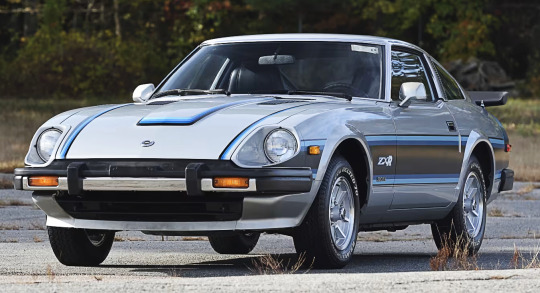




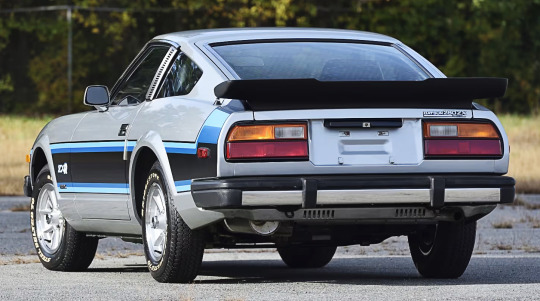
Datsun 280ZXR, 1979. One of 1001 280ZX homologation specials is to be offered at auction. What makes this car extra special is that it has travelled only 15miles since it was new 44 years ago. It was delivered new to St. Yves Motor Sales in Berkley, Massachusetts where it become part of their collection. The ZXR models came with a rear spoiler to homologate the special rear wing on its race cars. It will be offered at Mecum Auction's Kissimmee sale in January
auction listing
#Datsun#Datsun 280ZXR#special edition#homologation#1979#1970s#Z car#auction#cars for sale#low milage#dead brands
609 notes
·
View notes
Text
News: Ferrari 250 GTO leads collection of the world’s rarest Ferraris at Concours of Elegance
News: Ferrari 250 GTO leads collection of the world’s rarest Ferraris at Concours of Elegance

View On WordPress
#10th anniversary show#195 Inter#250 GT Europa#250 GT SWB#250 GT SWB SEFAC#250 GTO#A. Lange & Söhne#California Spyder#Colombo V12#Concours#Concours of Elegance#Daytona 500#Ferrari#Ferrari 365 P Berlinetta Speciale#Giotto Bizzarrini#GT SWB#Hampton Court Palace#homologation special GTO#Mamie Spears Reynolds#Pedro Rodriguez#Scaglietti#Tre Posti#ultimate Ferrari
3 notes
·
View notes
Text
These Mercury Capri Special Editions Offer An Alternative To Mustangs - Barry Kluczyk @Hemmings
5.0 performance came in more than one flavor
t’s commonly known that the 1979-’86 Mercury Capri was the corporate kissing cousin of the Fox-body Mustang, offered strictly as a three-door hatchback. Throughout its run, a number of uniquely trimmed special-edition Capri models were offered, including the Black Magic and Crimson Cat packages and the Turbo RS, which featured the same non-intercooled…

View On WordPress
#10 of the greatest NASCAR homologation specials#Alternative To Mustangs#Barry Kluczyk#Capri#Hemmings#mercury#Mercury Capri Special Editions
0 notes
Text

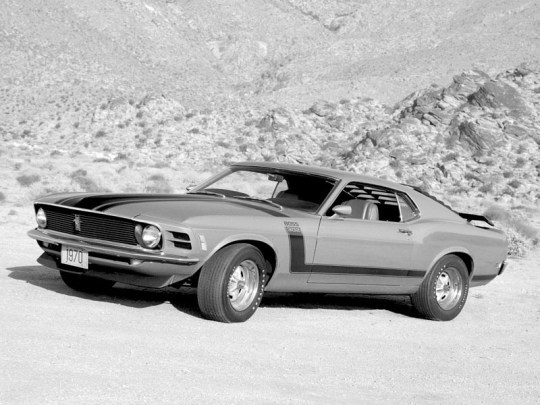
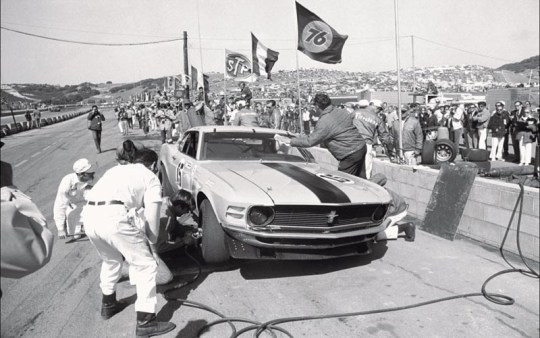
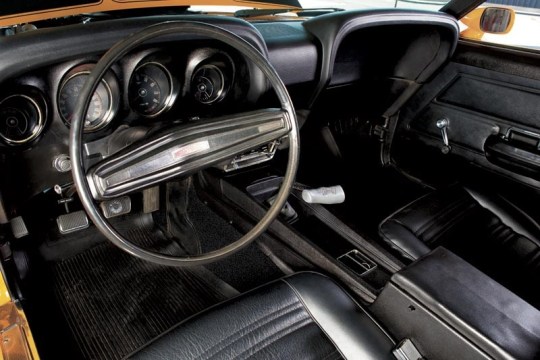
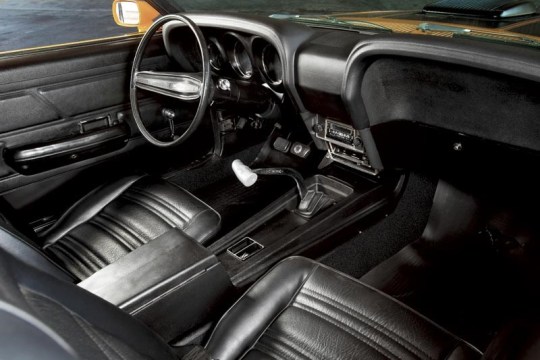



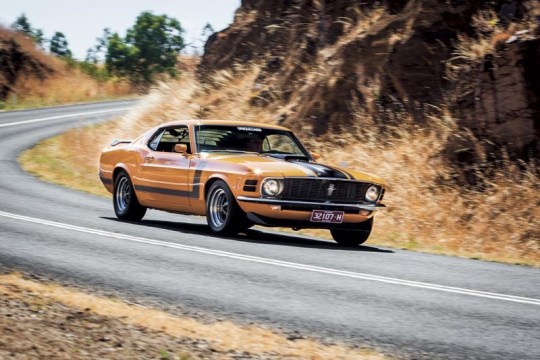

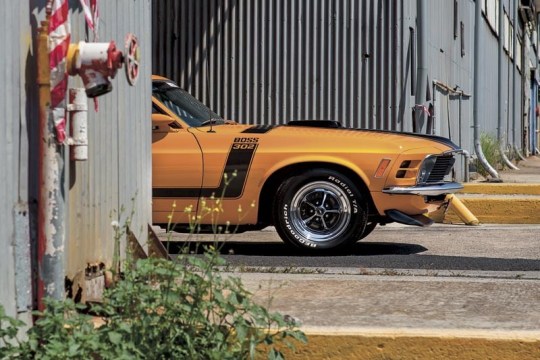
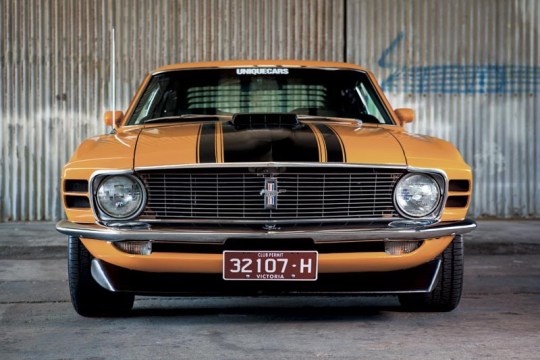

FORD MUSTANG BOSS 302
BOSS-A-NOVA!
They called it The Boss and for two short years it ruled the muscle car scene in the US, establishing itself as one of the greatest road and race cars of the era. Now, it’s one of the most collectible.
In 1960s US street lingo, if something was ‘boss’ it was cool, tough, the best. And the 1969 Boss 302 Mustang wore its badge with pride. It launched just four and a half years after the first Mustang was revealed to critical acclaim and record sales. Yearly updates to keep Mustang fresh in the face of tough new challengers from General Motors and Chrysler (particularly the Camaro) resulted in the once lean and pretty ’Stang muscling up, both in body shape and under-bonnet brawn, and the 1969-70 Boss models were the zenith of Mustang styling.
Thereafter, Mustangs became increasingly bloated and anaemic as the 1970s fuel crisis and stricter pollution laws cut horsepower and stylists lost their way; the rippling flanks and thrusting nose of the late 60s/early 70s cars gave way to boxy, bland designs. That early look would not be recaptured until 2005, when new Mustangs were given retro styling.
The Boss 302 was launched at the same time as its big-block brother, the Boss 429. Both were positioned as competition specials; Ford wanted to homologate its 302-cuber for Trans-Am and the 429ci monster for NASCAR. In fact, Ford went wild with engines between 1969-70, offering nine V8s – the ‘economy’ 302, 351 Windsor, 351 Cleveland, 390, 428 Cobra Jet, 428 Super Cobra Jet, 429 ‘wedge’, Boss 302 and Boss 429.
For the Boss 302, Ford’s high-compression 302ci small-block V8 was beefed up with four-bolt main bearing caps and redesigned ‘Cleveland’ cylinder heads with bigger inlet and exhaust valves, and ports that allowed the engine to breathe more efficiently.
These ‘semi-hemi’ heads were based on the Ford 427ci racing engine’s combustion chambers, and a balanced forged steel crankshaft and forged steel conrods allowed the engine to handle high rpms for sustained periods. A single 780cfm four-barrel Holley carburettor sat atop a high-rise aluminium inlet manifold, while a dual-point distributor, high-pressure oil pump, windage tray and screw-in welch plugs were further indications of its competition intent.
A rev limiter was fitted, progressively cutting spark from 5800rpm to 6150, but it was easily bypassed and the Boss 302 could reportedly keep making power up to 8000rpm with minor mods. In the muscle car marketing war, Ford claimed a peak horsepower figure of 290bhp at 5800rpm (the same as the Camaro Z/28), but that was extremely conservative.
Two four-speed manual Top Loader transmissions were available: a wide-ratio ’box with Hurst shifter more suited to street and strip use, and a close-ratio unit for racing. Adding to the race or road options list were four diffs: the stock 3.5:1 nine-inch, Traction-Lok 3.5:1 and 3.91:1 and the No-Spin 4.30:1 built by Detroit Automotive. Axles and diff centres were also strengthened to take the loads.
Suspension was also race-inspired with heavy-duty springs, shocks and sway bar up front, and Hotchkiss-style rear suspension with heavy-duty leaf springs, sway bar and staggered shock absorbers. The left-hand shock absorber was bolted behind the axle and the right in front, to reduce axle tramp under acceleration. Amazingly for such a high-performance car, braking was still only discs and drums with power assistance.
Ironically, the Boss 302’s sexy shape was styled by former General Motors designer Larry Shinoda, who is often credited with coming up with the Boss moniker. When asked what he was working on, he replied, "The boss’s car", a reference to new Ford president ‘Bunkie’ Knudson, who was also ex-GM and had recruited Shinoda to Ford.
While the wheelbase remained unchanged at 2740mm, the ’69 Mustang was 96.5mm longer overall to accommodate all the V8s offered, although the big-blocks still had to be shoe-horned under the bonnet. Shinoda’s ’69 Boss 302 was also one of the first production cars to offer an optional front air dam and adjustable rear wing, and his use of high-contrast black panels, rear window SportsSlats, and go-faster stripes made the Boss a real attention-grabber. The ’69 was also the only quad-headlight Mustang, a feature that was dropped for 1970 models.
In 1970, American Hot Rod magazine dubbed the 1970 Boss 302 as "definitely the best handling car Ford has ever built", while the conservative Consumer Guide called it "uncomfortable at any speed over anything but the smoothest surface". Unique Cars resident Mustang maniac, ‘Uncle’ Phil Walker, never read the Consumer Guide review, but even if he had it wouldn’t have stopped him buying the immaculate 1970 Grabber Orange Boss 302 you see here.
Phil already has his beloved 1966 Shelby GT350H, but the Boss 302 really got his Mustang juices percolating. And he wasn’t alone, because the first Boss he saw, some 43 years ago, is still one of Australia’s most iconic race cars: Allan Moffat’s Trans-Am racer. Phil remembers it clearly.
"I saw Moff race it Calder and I was inspired to own one," Phil recalls. "It was the most aggressive-looking car; its stance was something you had to see to believe. It looked like it was doing a million miles per hour when it was parked.
"My Boss was originally a one-owner car and I bought it from a friend of mine in California, Dave, who I also bought my Shelby GT350H from 19 years ago. Dave found it in a barn with a blown engine, but in otherwise pretty good condition.
"The lady who owned it from new didn’t realise it had a high-compression engine and had run it on standard fuel. When it blew up she just parked it.
"Dave did a nut-and-bolt restoration over two years, then put it up on his hoist. He didn’t want to sell it, but I got my way in the end – unfortunately he had the last say on the price (laughs). I didn’t even bother to test drive it; I knew it was a good car. It had 21 (new) miles on the odo when I picked it up and only 54,000 miles in total."
Since then, Phil has only put a couple of hundred miles on the car, but that’s enough for him to have bonded with it.
"I’ve only had the Boss since January and it’s growing on me. It’s different to the Shelby. It’s bigger and very low.
"The engine is incredible. Dave is one of the best engine builders in California and when he rebuilt the 302 he changed the cam spec. US camshaft technology was okay in the 60s and 70s, but if you had a big-cam muscle car they wouldn’t idle and they were terrible for driving in cities.
"A proper Boss engine can rev to 8500rpm all day and for a V8 that’s pretty serious. But they’re not renowned for low-down torque; it starts coming on from 3500rpm. My car still has a solid-lifter cam, but it pulls like a train from 1200rpm in top gear and I can drive it around at 1500rpm in top all day.
"It’s got the four-speed close-ratio Top Loader with the long first gear and with a 3.7:1 rear end it does about 55-60mph (89-97km/h) in first gear. It bloody goes!"
Phil is a fussy bugger and his cars have to look just right, so Russell Stuckey from Stuckey Tyres has ordered him a set of genuine 15 x 8 Minilites from England to replace the standard Magnum 500s.
"I want it to look like the Parnelli Jones race car, and to get the stance I want it’s going to have 275/60s on the rear and 255/60s on the front. At the moment it’s a pretty car that is tough, but I want a tough car that looks tough. And that’s all I’m going to do to it."
After his first real fang in the Boss, Phil felt that his Shelby would be half a lap in front at the end of a 10-lap sprint at Sandown, but now thinks the Boss would be quicker. We might have to put both to the acid test one day. What do you mean "no way", Phil?
It was a nervous Phil who turned up at a Melbourne storage facility in January to pick up his new Boss 302. So nervous, in fact, that he took along Unique Cars art director Ange and a sturdy tow rope – just in case.
The storage people were even more apprehensive – they had been warned about just how anal he is with his cars, as he explains: "The lady there said, ‘You must be pretty fanatical because we’ve been given strict instructions that no one is to touch the car except you’." Fortunately, the car arrived in pristine condition.
"I was pretty excited, I’d been waiting for seven weeks," Phil laughs. "I took the car cover off it, fired it up, and it drove home like a brand new car. It was as good as I thought it would be. I spent the next three hours washing it."
Sounds like our Phil.
PARNELLI AND ME
Three years ago, my mate Dave and I were invited to a Trans-Am dinner at Portland International Raceway where Dave was racing his 1970 Trans-Am Boss 302 and I was crewing for him.
When we were driving there we noticed this black Mercedes following us. When we stopped it did too and this bloke got out and said, "I noticed you guys back at the hotel. You’re going to the Trans-Am dinner aren’t you? I’m lost." It was Parnelli Jones!
I jumped in with him and when we got there I ‘invited’ myself onto Parnelli’s table, which also included Pete Brock – the guy who designed the Shelby Daytona Coupe. There was I, Mr Nobody, with all these US racing heavies, but Parnelli was a real gentleman, not up himself in any way.
The next day they had free lap time at Portland and, when I saw Parnelli there with Ford’s new ‘Parnelli Jones’ Boss 302 tribute Mustang, I asked if there was any chance of a ride and he said jump in. We did 10 laps and the guy hadn’t lost any of his ability; my eyes were getting bigger and bigger coming into the corners.
It was a great experience that I’ll never forget. – PW
IT's MINE...
Moff’s Mustang is probably the most iconic Australian racecar and after seeing it I was inspired to own a Boss Mustang.
Then, about 25 years ago, I went to Pebble Beach in Monterey for the first time and saw a 1970 Grabber Orange Boss 302, which was the colour Parnelli Jones raced in Trans-Am. That day I knew I had to own a Boss. It was the car I’d always wanted after my Shelby, which was my lifelong dream car.
My Boss 302 is fully optioned, including the Shaker, extra side mirror, tacho and rear louvres, and it’s got a lot of wow factor. When you drive down the freeway, you get the thumbs-up from all sorts of different people. I think it’s the colour.
It’s closer to show standard than my Shelby. It’s got the paint marks on the tailshaft and all the little concours details, but I’m never going to show it; I’m not into that.
The 1969/70 body shape is still the best. Ford got it right then, but lost the plot after that and it’s reflected in their collectibility today. – PW
#car#cars#muscle car#american muscle#ford#FORD MUSTANG BOSS 302#ford mustang#boss 302#MUSTANG BOSS 302#mustang
149 notes
·
View notes
Text


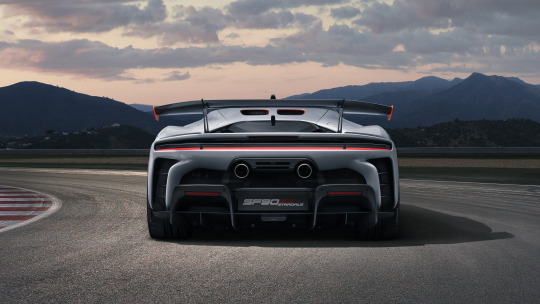
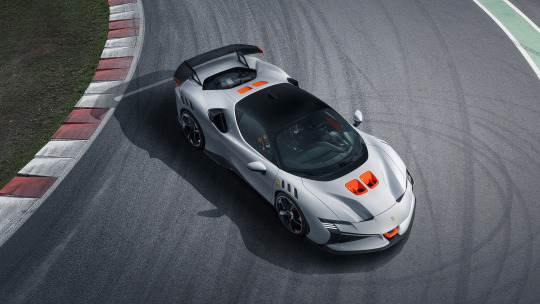
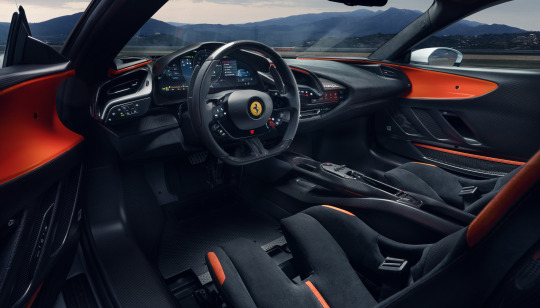

First Look: The Ferrari SF90 XX Stradale
Based on the SF90 Stradale, the new special limited series SF90 XX Stradale was unveiled today alongside its SF90 XX Spider counterpart. To be built in just 799 and 599 examples respectively, these new V8-powered PHEVs represent the latest and most extreme example of a concept of special versions, which pushes the performance of Ferrari’s road-going models to new levels.
The concept has been honed over the past 20 years or so, with many of these models quickly becoming considered benchmarks in the Prancing Horse’s line up, such as the 488 Pista and 812 Competizione. Over the same two decades, Ferrari has also developed the XX Programme to offer a select group of expert client drivers extreme cars that are not homologated for the road, but that can be driven at the very limit on the track. All of the models produced by the programme have proved a huge success, with the most recent addition being the FXX-K EVO.
Drawing on its experience in both of these spheres, Ferrari decided to create a road-legal car which embodies the maximum expression of the two programmes’ engineering concepts. The SF90 XX Stradale is based on the supercar in the range, the SF90 Stradale, and raises its already impressively exhilarating track and on-the-limit driving experience to new heights. Performance is boosted thanks to its impressive 1,030 cv (30 more than the SF90 Stradale), specific software logics and the use of radical new aerodynamics solutions, including a fixed rear spoiler – the first to appear on a road-going Ferrari since the days of the F50 – which delivers an unparalleled 530 kg of downforce at 250 km/h.
132 notes
·
View notes
Photo

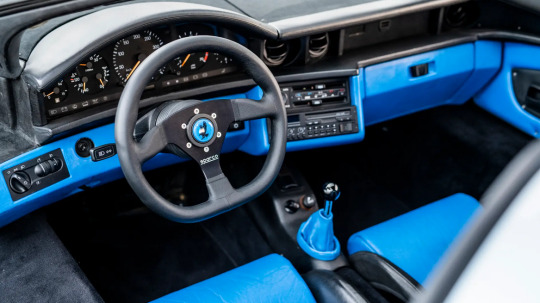

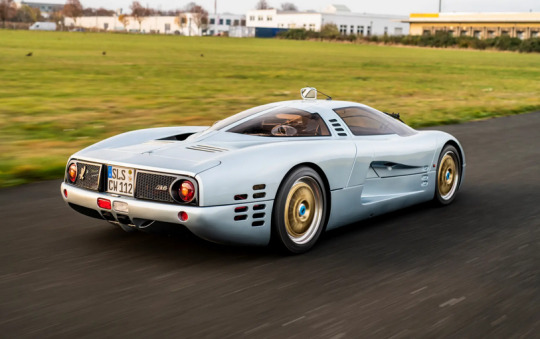

Isdera Commendatore 112i, Intended as a homologation special for a Le Mans prototype, Isdera was so obsessed with aerodynamics that they put the rear-view mirror on the roof. Fitted with Mercedes-Benz’s iconic M120 V-12 engine, also found in the Pagani Zonda
301 notes
·
View notes
Photo
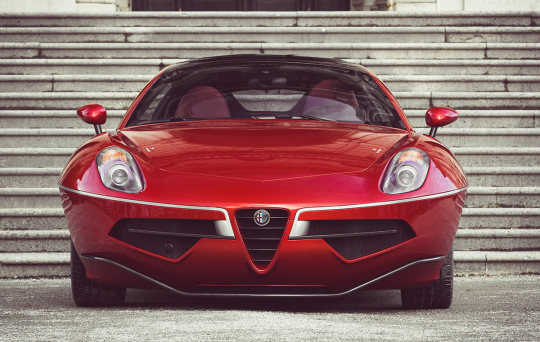
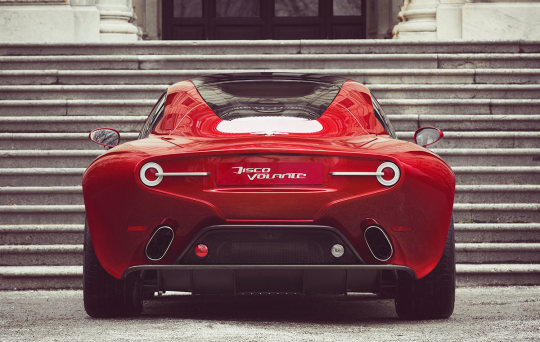
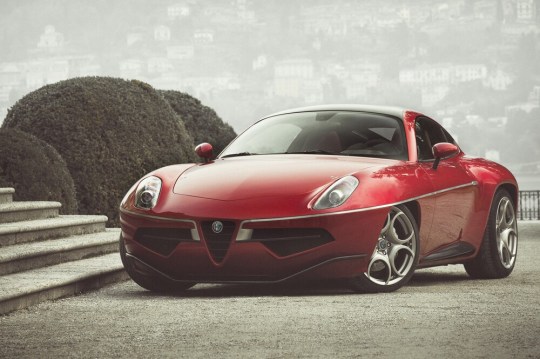
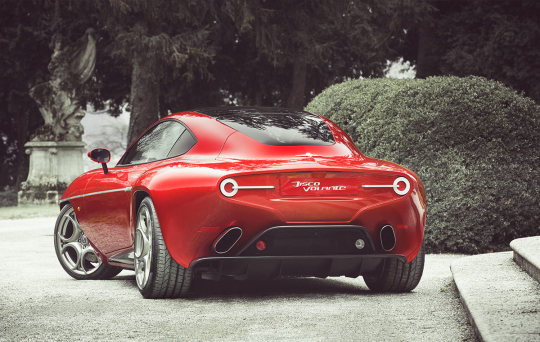
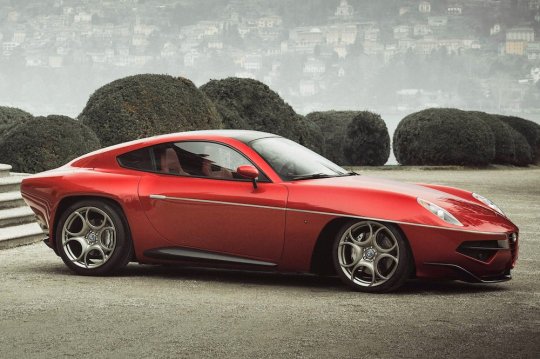
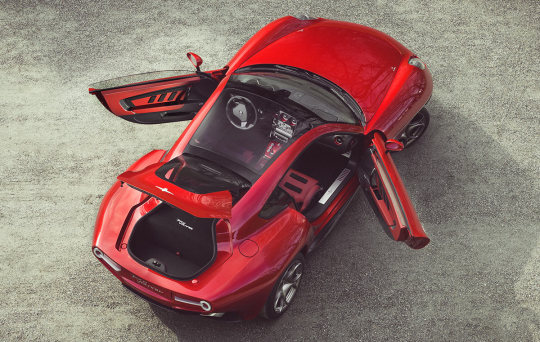


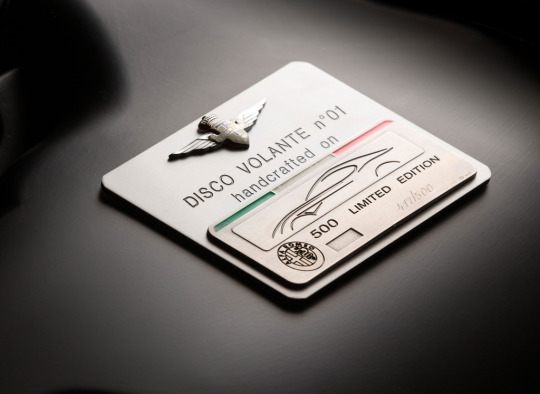
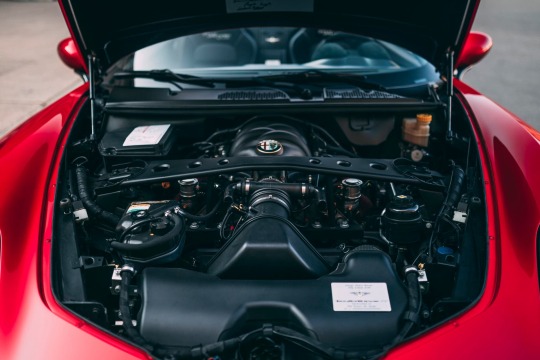
Alfa Romeo Disco Volante by Touring Superleggera
The Disco Volante is a two-seater Gran Turismo. It is based on the Alfa Romeo 8C Competizione coupé with its front-central mounted 4.7 litre V8 engine and a transaxle rear drive with unmodified specifications. Each unit, of which the construction requires 4,000 hours of manual work.The present Disco Volante celebrates the myth of the 1952 style icon. The new design briefing required to blend ingredients as innovation, emotion and aerodynamic properties into a timeless and essential shape.During the development stage, Head of Design Louis de Fabribeckers and his team cooperated with the engineers on an almost daily basis. “We focused on the preservation of the design essence. – says de Fabribeckers – Once the design frozen, we had to understand the manufacturing problems and solve them right away without compromising the design.”In consistency with the car’s design philosophy the interior has a ‘science fiction’ feel to it. Part of this ‘spaceship’ atmosphere was created by elements like the red LED interior light profiles. Also, aeronautics has been the inspiration for parts like the dashboard, instruments and seat adjustment lever.The Alfa Romeo 8C Competizione chassis was chosen for its light and rigid structure and its outstanding dynamic properties. Therefore it forms the perfect basis for the coach-built bodywork of the Disco Volante, integrally conserving the rolling chassis and drive train.The Alfa Romeo 8C’s steel space-frame and other structural elements were retained to guarantee torsion stiffness, high performance and the quality standard. The frame members and the central carbon cell remained unchanged. Elements of the underpinning and the body, such as the engine bay and firewall, the windscreen and cowl, the a-pillar and the locks and hinges have been retained too, just as the dashboard and instruments, the pedals and the steering wheel. Parts like doorframes, the roof frame and the c-pillar have been modified to match with the new shape.The layout of a front-central mounted engine, a transaxle transmission and rear-wheel drive offers an optimal weight distribution of 49-51% between the front and rear axles. To ensure excellent handling the front and rear double-wishbone suspension scheme is combined with hub carriers of forged aluminium and additional trailing arms for the rear suspension.The lightweight and compact 4.7 litre V8 engine delivers 450HP and 480Nm peak torque. It is coupled with a six-speed sequential transaxle gearbox with electronic control and paddle-shift gear selection. Together with a limited-slip differential and a state-of-the-art braking system with large diameter, ventilated discs a precise, dynamic and proactive drive is ensured. The Disco Volante can accelerate from 0 to 100 km/h (0-62 mph) in 4,2 seconds and has a top speed of about 290 km/h (181 mph).
All new and modified components of the Disco Volante have been CAD designed. In this process, which covers feasibility, safety, homologation, aerodynamics and structural analysis, the most advanced IT tools and simulation techniques have been used.
Since torsion stiffness and noise reduction are of critical importance, special attention has been paid to the under-body structure and its elements, like the tubular frames supporting the rear wings and bumper, and the roll bar joining the c-pillars. Other complex design issues were the tailgate hinges, the 3d-cambered door window, and the front wheel covers.
The Disco Volante was then submitted to a CFD aerodynamic study to enhance the airflow and ensure optimal downforce in the rear section. After that, FEM calculations were run to assess resistance and rigidity of all parts subject to homologation.
Touring Superleggera is synonymous with the manufacture of lightweight bodywork. The weight advantage of aluminium is one of the assets of Touring Superleggera’s construction methods. Nowadays however, the craft of hand-beating aluminium panels is combined with the use of carbon fibre reinforced plastic (CFRP). For the Disco Volante, Touring decided to use this combination of aluminium and CFRP. This has been the result of a study conducted to define optimal use of materials for the bodywork in terms of weight, resistance, precision, finish and quality, and ease of repair in case of damage.
The CFRP is used for specific components like the front bumper and grille, the bonnet, the skirts, the boot lid and the integrated rear-window frame. The bonnet and the boot lid are sandwich-built with Nomex filler in-between to obtain a better stiffness/weight ratio and to dampen vibration and noise.
The aluminium panels are hand-beaten using an epoxy mould. Since the inner frames of most parts of the bodywork are made of CFRP, this requires gluing of aluminium on carbon fibre. This technique adds to the rigidity as the glue has structural properties.
The body panels are pre-assembled on a laser measurement platform using a jig. This ensures that the strict tolerance required is respected. After adjustment, the panels are either welded or glued. The body-in-white is then used to preassemble and fit all trim components, brightware and moulding.
160 notes
·
View notes
Text
Phylum #14: Tardigrada, the water bears!

With humans, the only creatures to have reached the Moon alive are small, inconspicuous eight-legged creatures. But they are not spiders, or arthropods for that matter. While still their ancient relatives, tardigrades have followed a very different evolutionary path.
Tardigrades are part of our third and last ecdysozoan group, panarthropods - with a segmented body bearing multiple pairs of limbs. However, most of the tardigrade body isn't homologous to the arthropod one! Instead, most of their limbs correspond to what would become antennas and mouthparts in arthropods, functionally making them a giant head with two back limbs!
Most famous for surviving extreme conditions, from near-absolute zero temperatures to immense pressures or the vacuum of space, tardigrades achieve this thanks to a special capability called cryptobiosis. By entering a dehydrated "tun state", they preserve themselves while nearly stopping their metabolism, and can be revived decades later in perfect health! While they survived on the surface of the Moon, they do not thrive in those extreme conditions, only being dormant - in fact, they prefer moist environments like mosses or hot springs!
Fancy a mystery? Tardigrades today are divided into two main classes - the plump Eutardigrada and the armored Heterotardigrada. However, a third class, Mesotardigrada, was discovered in 1937, with a single specimen found in a hot spring near Mount Unzen, Japan. Of unique appearance among tardigrades, it was never found again despite repeated searches, and the type locality was destroyed years later.




60 notes
·
View notes
Text
CW: Weird organs

The reproductive system of Astutocentaurus, particularly the Fauns (Astutocentaurus cosmopolitans).
Fauns and other Astutocentaurus are diecious, being born either "male" or "female" with only the lower abdominal zooid bearing gonads for reproduction. Like birds, reptiles, and some mammals, they possess a cloaca in which both their excretory and reproductive organs are housed. Men have a long, retractile phallus that has a lymphatic hydroskeleton, whereas a homologous structure in women remains internalized to form the cervix and uterus. The testicles and ovaries are also homologous structures.
In addition to the actual genitals, they also possess a set of erogenous frontal claspers on their upper abdominal zooid, which are evolved from the same limb buds that develop into the sternal claw and gnathopods. These specialized structures evolved as a social tool that allows mates to bond sexually in a non-reproductive manner, and they also play a role in facilitating arousal immediately before proper copulation. Recapitulating the structure of proper genitals, the frontal claspers are similarly sexually dimorphic. In men, the clasper is a medially fused, cartilaginous appendage called a "clavus", and it folds downward when not in use. In women, however, the clasper is a paired structure connected by a flap of skin, forming an invaginated pouch called a "clausura". In both men and women, the clavus and clausura are fully external and vulnerable structures, and are usually veiled in clothing for both modesty and protection.
14 notes
·
View notes
Photo
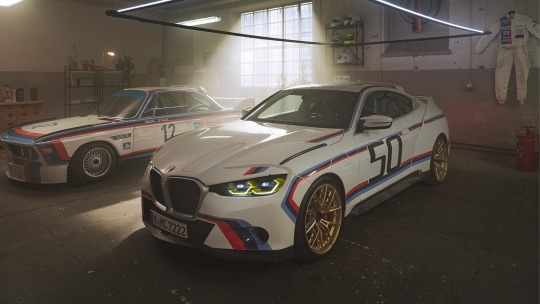
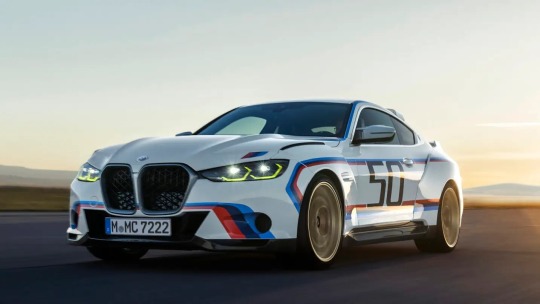



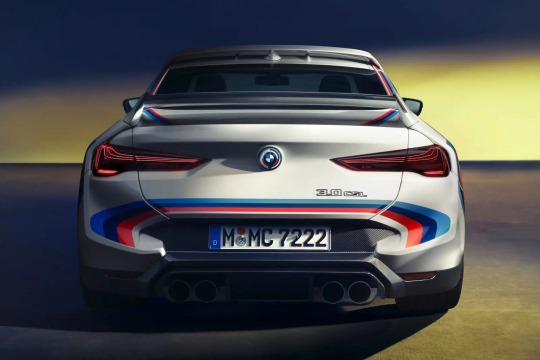

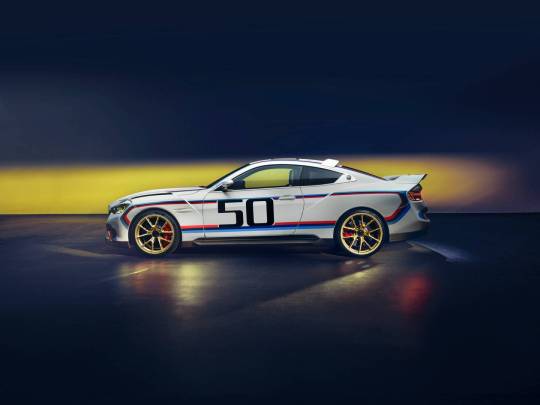
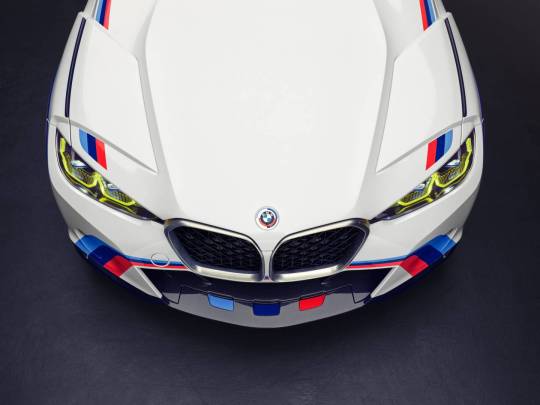

BMW 3.0 CSL
German automaker has unveiled a special 3.0 CSL model as a tribute to its race cars from the 1970s.
It will be limited to exactly 50 units to mark BMW’s 50th anniversary, the production of all the vehicles will take approximately 3 months and each vehicle will be created in an elaborate manufacturing process at the external location of BMW Group Dingolfing plant in Moosthenning, Lower Bavaria.
The exclusive interior carbon fibre reinforced plastic (CFRP) components will be produced by hand at the BMW Group component factory in Munich.
For the paintwork of the new BMW 3.0 CSL, a specific process was conceived, craftsmanship and high-technology was combined to provide each individual part with its characteristic colour design, a team of 30 qualified technicians worked on the vehicles and each model took upto 10 days to complete.
The racing version of the historic BMW 3.0 CSL won the European Touring Car Championship during its inaugural season in 1973 and repeated this title win five more times in succession from 1975 to 1979. The road version of the racing car was developed for homologation purposes and became a widely known symbol for inspiring driving pleasure.
The BMW 3.0 CSL is powered by the most powerful straight six-cylinder engine with direct injection ever used in a BMW model, the engine produces a maximum output power of 206 hp, the powerful drive system was combined with refined suspension technology and its unladen weight was just 1270 kgs.
#art#design#sportcars#supercars#supercar#bmw#bmw 3.0 CSL#luxurylifestyle#luxurycars#luxurycar#50th anniversary#racingcar#sportcar#collector's
151 notes
·
View notes
Text

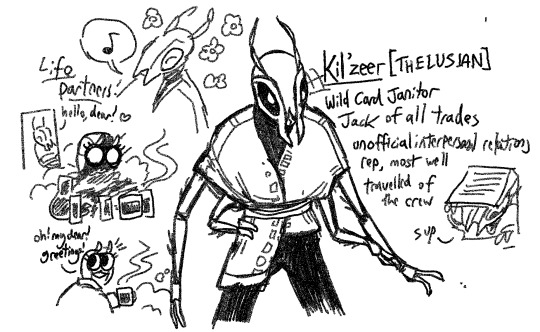

The science team(+ honorary member)!! Three more (kinda) crew members from Thierri's ship. (I've got a lot more crew members on the way, will make masterpost soon!)

YOSHI [Hylotl]
Yoshi was among a large batch of crew members that were brought onboard after the main trio (Thierri, Gus, Chal) took down a massive bounty which wrecked Thierri's old ship. Instead of retiring with their small fortune, the main three decided to put it towards commissioning a larger ship that could accommodate more crew members and facilities. Yoshi was initially an advisor brought on to oversee the specific accommodations for each crew member (e.g. size of living space, accessibility, coordinating sleep cycles.) After their contract expired, they were offered a full-time position aboard the ship as ship doctor once the new ship was space-ready.
While Yoshi's main responsibilities include the general health of the crew, over time they also took up the title Head of Research Relations. Although the title sounds lofty, it mostly entails passing on data and samples from bounties to the resident researchers at the time as well as managing said researchers.
Yoshi was born and raised in the "shallows" of the Hyotyl Domain. "Shallows" being slang for Hyotyl colonies that are ideologically and culturally (rather than geographically) distant from the Hyotyl homeworld.* Many of such settlements, including Yoshi's, are more diverse than the more homologous settlements deeper in the Hyotyl Domain. As a result Yoshi has extensive experience treating many biologies besides hyotyl.
Despite having only a few medical staff under their supervision, Yoshi handles the health and well-being of the entire crew very efficiently with the help of many specialized machines/tools. Some would say there are more machines than necessary to the operation of the medical bay, however Yoshi has a justification ready for each one.
For example, The "Artisanal" Mold-Maker 5028, marketed for its aptitude in converting 3D models into candy molds nigh instantly is essential to the organization and sorting of individual crew members' essential vitamins and other regular supplements. By casting each supplement in the gummy shape of its corresponding crew member, it's nearly impossible for someone to mistake their supplement for somebody else's. (Though it doesn't stop Chal and Gus from playing with them like dolls.)
While their mask of patience that barely hides their eagerness to connect has captured the heart of the crew, Yoshi doesn't plan on staying aboard forever. Their dream is to become a pediatrician in their hometown, however they have yet to start the extra training required due to lack of funding.
*: The colonies/settlements that are closer to the Hyotyl homeworld are usually referred to as "deeper" and the homeworld itself as the "depths" (or for the less favorably inclined: "the pits.") While these terms are commonplace in all Hyotyl colonies/settlements, they are almost never used on the Hyotyl homeworld**.
**: I also feel that it is relevant to mention that Letheia Corp and the Alliance of Hyotyl Fiefdoms are at odds with each other. A majority of homeworld lords are against the relative freedom many offworld settlements have from the domain of the fiefs. Many of them accurately suspect that Letheia often undermines the control of the Fiefdoms in shallower settlements.

ONAE SEPTUS [Mantizi]
(Placed further up for easier understanding, sorry Kil'Zeer, you'll have to wait a bit.)
Onae Septus was the first researcher to join the ship after the first big batch of hires (Yoshi, Loprekyat and other, yet to be named crew members.) Nae isn't actually a member of the crew, rather, nae is an independent researcher who pays to be housed on the ship as well as collect information and samples from the crew's missions/contracts. Naer research centers around eldritch beings, horrors such as the Erchius Horror and The Ruin that have been appearing much more often since the destruction of Earth. Onae will help the crew out on occasion, however the relationship is kept mostly transactional (as nae prefers.)
It took over a dozen applications over the years before Thierri accepted Onae's proposal to partially fund the ship in return for their research position. The reason he accepted when he did is mostly because ship funds were dwindling after the first expansion. His unwillingness to cooperate originated from their first meeting, when Onae proposed studying him as well. Needless to say, that did not go over well and Thierri refuses to go near naer laboratory to this day.
Onae's inner circle is very small, but very rich in personal connection. Nae finds seeking out new connections in naer workplace frustrating and often fruitless. Besides, nae is perfectly satisfied with not only their life-partner, Kil-Zeer, working on the same ship, but also gaining a peer with intellect on-par with naer own(Yoshi.)

KIL'ZEER [Thelusian]
The most well-travelled of the crew, Kil-Zeer, was initially brought onboard as a custodian at the bequest of Onae, but quickly proved to be an essential asset in managing the growing pains that followed the expansion of the crew. Zee often works closely with Yoshi, helping to fill in their knowledge of various races culture around medical treatment, as their proficiency leans more towards medical knowledge over social.
In terms of relative maturity, Kil'Zeer is the oldest among the crew. Zee holds two titles in zeer home hive: Elder Council Member and Veteran Warrior. The aforementioned home hive is made up of six previously warring hives that joined together against a larger threat (more on that later.) Kil'Zeer played a major part in steering the newly formed hive council away from an isolationist stance by personally seeking out allies beyond other Thelusian hives. Despite zeer massive contributions to the formation of a new hive, many criticized zeer actions as too risky as it could bring galactic attention to their weakened state after finishing a war, signalling them as an easy target for any imperial power out there. As a result Kil'Zeer was voted into indefinite suspension of council duties.
Zee took zeer suspension well, all things considered. Zee'r treating it as a long vacation with zeer life-partner Onae, who zee met when zee was a young warrior, but after the hives started to join they rarely had a chance to see each other. Kil'Zeer is confident that the council will end the suspension eventually, but until that day comes, zee is going to spend as much time with Onae as possible.
#starbound#starbound oc#hylotl#frackin universe#fu thelusian#fu mantizi#thierri's crew#this has been in my drafts for over a month now#time to set it free into the wild#my art
31 notes
·
View notes
Text

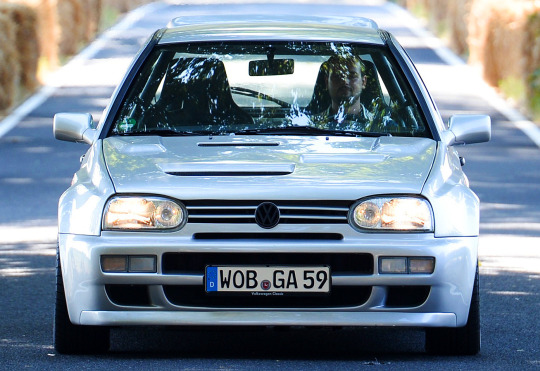


Volkswagen Golf Rallye A59, 1993. I have posted about it before but one of VW's more interesting concepts at this year's SEMA is also the oldest. The Mk 3 Golf Rallye (code named A59) was a prototype for a proposed WRC entry that rules at the time required 2,500 homologation specials of the participating rallycar. Two prototypes were built (only one is drivable) by Cadolzburg-based Schmidt Motorsport (SMS) but VW decided not to go forward with the WRC entry and the project was shelved. It was powered by a turbocharged 2.0-litre 4-cylinder all-aluminium engine producing 271hp and driving all 4 wheels through a 6-speed manual gearbox and a motorsport-grade AWD system
#Volkswagen#VW#Volkswagen Golf Rallye#Volkswagen Gold A59#prototype#rally car#homologation special#all wheel drive#4WD#turbocharged#Mk 3 Golf#Volkswagen Golf Mk 3#1990s#Schmidt Motorsport#SEMA#SEMA22
2K notes
·
View notes
Photo



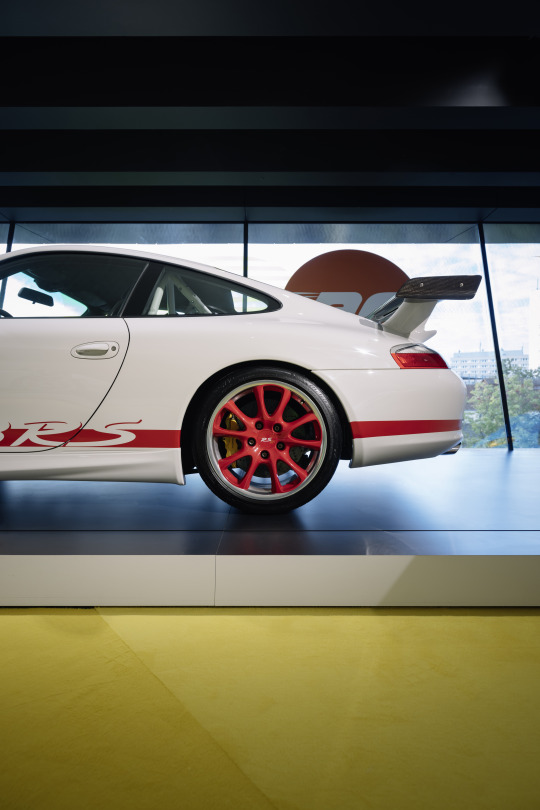
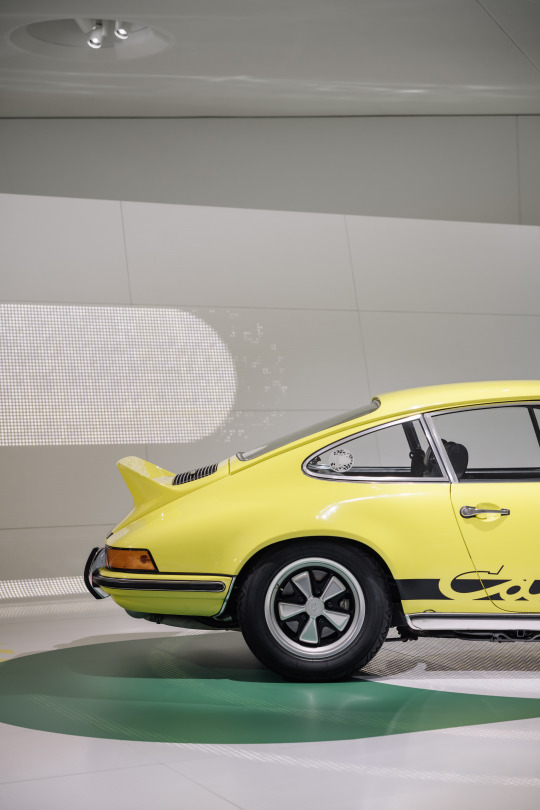

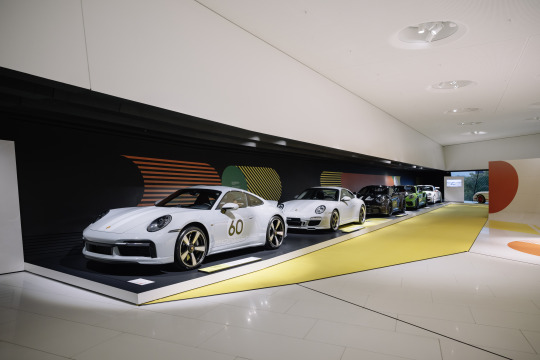
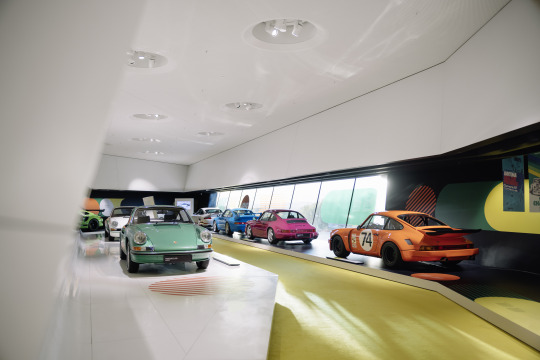
Inside Look at “Spirit of Carrera RS” Special Exhibition
The Porsche 911 Carrera RS 2.7 is an undisputed icon of automotive history, unique and unforgettable. Fifty years after its world premiere, the Porsche Museum is honouring it with a special exhibition, “Spirit of Carrera RS”. Starting on 20 September 2022, the Porscheplatz in Zuffenhausen will be all about the “ducktail”, “RS” or “2.7”, as the sports car is known among Porsche enthusiasts.
When the RS was unveiled at the Paris Motor Show on 5 October 1972, it was the first series-production car in the world with front and rear spoilers. The requirements for the 911 base vehicle for racing and rallying were clearly defined: light and fast were the watchwords. To achieve the objectives, Hans Mezger and Valentin Schäffer developed the 2.7-litre six-cylinder boxer engine with direct fuel injection from the ground up new. In the Sport version, the 210-PS, 960-kg Coupé went from 0 to 100 km/h in 5.8 seconds and topped out at almost 245 km/h. The precise aerodynamics designed back then with racing cars in mind still make the RS unique today.
The Porsche Museum tells the story of the RS and its racing cousin, the RSR, not only through the cars and anecdotes, but also with films, photos, racing posters and interactive features. Visitors can, for example, put together their own custom RS by turning the model-detail and colour wheel of the kaleidoscope. To fulfil as many personal wishes as possible, Porsche held fast to the customisation principle with the Carrera RS 2.7. Buyers could choose from a wide array of colours and equipment options. The strong demand took the sports car manufacturer by surprise, which initially had planned a mere 500 series-produced cars for homologation. At the centre of the special exhibition is a bright yellow 911 Carrera RS 2.7 in Touring spec, as well as a rare prototype in green metallic. The vehicles, development documents, advertising brochures, price lists, the Carrera logo and an article from the customer magazine Christophorus describe the path from the development vehicle to the production-ready Porsche.
Visitors can also look forward to seeing other extraordinary cars from the family lineage of the ducktail spanning five decades of Porsche history. With the duo of the 911 (964) RS and 911 (993) RS, Porsche expanded the RS family to include air-cooled sports cars. The water-cooled era is represented by the 911 (996) GT3 RS, 911 (997) GT3 RS, 911 (991) GT3 RS and 911 (992) Sport Classic models, the last of which is a collector’s edition from the Heritage Design Series from Porsche Exclusive Manufaktur and features a fixed rear spoiler. The car’s moniker from the realm of avian anatomy was inspired by the shape of the rear spoiler. At high speeds, the ducktail presses the 911 to the ground and thus reduces lift to achieve the ideal balance and enable higher top speeds. With the RS half a century ago, the sports car manufacturer achieved the perfect synthesis between weight, power, aerodynamics and driving dynamics. Light, fast, race-ready and road-approved.
124 notes
·
View notes
Text
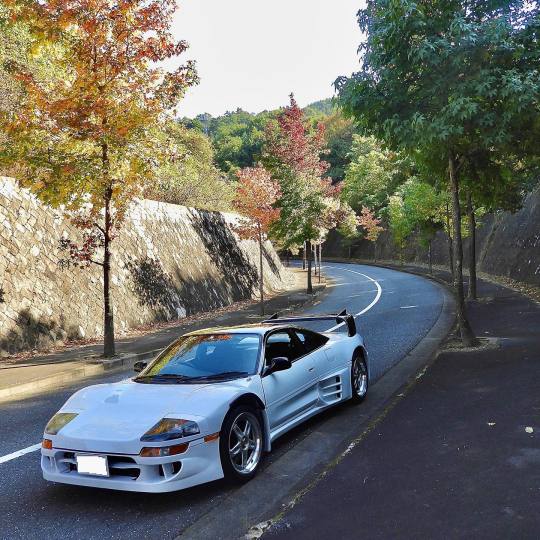











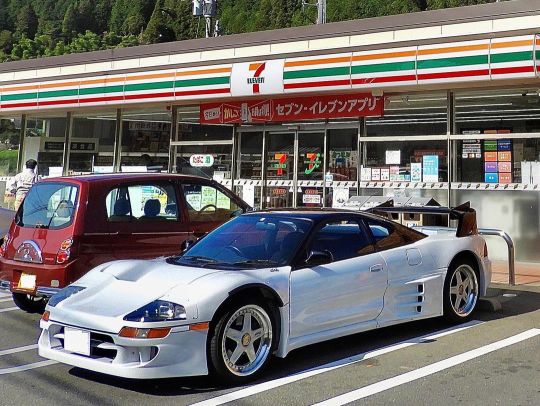



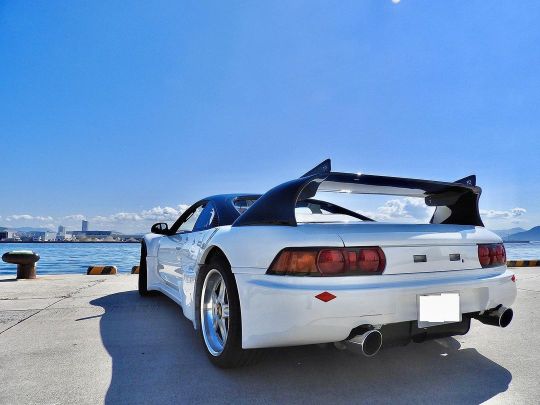
SARD MC8 road car. Built for homologation purposes by Toyota's Sigma Advanced Research Development (SARD) works team for use in GT1 racing. The car was a very simple design, and was essentially a normal SW20 MR2 with wider body work and a tube framed rear section meant to accommodate a longitudinally mounted 1UZFE. While the MC8-R was highly noncompetitive in the 1995 BPR Global GT Series and the 1995-1997 24 Hours of Le Mans, the concept of a semi-purpose built sports prototype would go on to inspire the designers of the dominant 911 GT1. Unlike many one-off homologation specials from the 90s, this vehicle is in the hands of a private owner that regularly takes it on the road.
Owner's IG: https://www.instagram.com/mc8_channel/
Additional story: http://www.speedhunters.com/2022/11/sard-mc8/
10 notes
·
View notes
Text
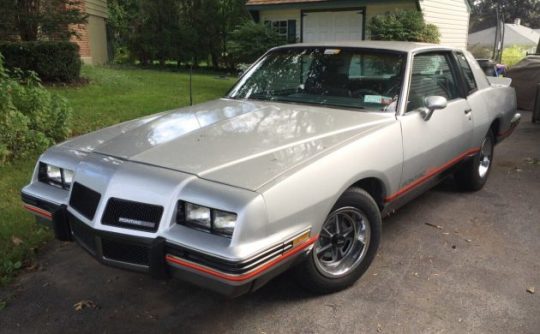
1986 Pontiac Grand Prix 2+2
It is often said that racing improves the breed, and the move by Formula One to a hybrid drivetrain has seen the equivalent technology in road cars evolve at an unprecedented pace. Manufacturers will always seek what is commonly called “an unfair advantage,” exploiting the rule book to its outer limits to extract greater speed from their racing models. It was against this backdrop that Pontiac released its 1986 Grand Prix 2+2. It was developed as a homologation special for NASCAR competition and only graced showrooms for one year.
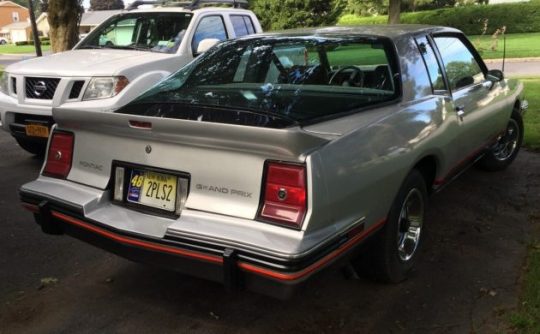
NASCAR competition has evolved into a sport featuring control underpinnings and exterior panels that are almost identical across all participating brands. Today’s cars share little with their predecessors, and the term “stock car” has a reasonably loose meaning. Earlier generations were based upon showroom models, and it was against this backdrop that cars like the Chevrolet Monte Carlo Aerocoupe and the Pontiac Grand Prix 2+2 emerged. General Motors sought aerodynamic and downforce improvements for their participating models, and smoothing the airflow across the body and rear spoiler achieved this without introducing additional drag. Wholesale sheetmetal changes weren’t warranted, but adding a fastback-style back window achieved the goal at a reasonable cost. The cars weren’t the most elegant on the planet, and the reduced trunk opening to accommodate the changes reduced practicality. Still, the Aerocoupe and 2+2 proved effective on superspeedways like Daytona and Talladega. Pontiac released 1,118 examples of the Grand Prix 2+2 to qualify for NASCAR competition, with all finished in a combination of Silver and Gray. The history of this car is unclear, but it presents exceptionally well for its age. The paint retains a healthy shine, while the plastic and graphics are excellent. Dealers sold the 2+2 at a premium price, but the extra cost didn’t guarantee that these classics would lead an easy life. Many owners drove them hard and fast, and it is common to see dilapidated and rusty examples appearing in the classic market. This car has avoided that fate and would turn more heads today than in 1986.
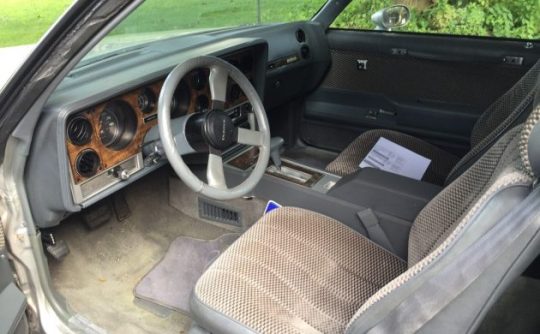

Pontiac considered the Grand Prix 2+2 to be a muscle car, although the 165hp and 245 ft/lbs of torque produced by its 305ci V8 doesn’t hint at anything special. Buyers received a four-speed 200-4R automatic transmission and a 3.08 rear end as standard fare, with no manual option to improve performance. The ¼-mile ET of 17 seconds perfectly demonstrates the depths of The Malaise Era. While that figure looks modest by modern standards, it was what buyers expected during that period. The situation would improve in the future, but it is sobering to consider that you can drive a four-cylinder family sedan or hatchback off the showroom floor today that could show this Grand Prix a clean set of heels.

The Pontiac Grand Prix 2+2 was a one-year-only model sold in limited numbers. I don’t find these the most attractive cars on the planet, with Chevrolet achieving better aesthetic results with its Aerocoupe. However, beauty is in the eye of the beholder, and you might find yourself irresistibly drawn to this classic. I respect that if it is the case because it is a car that would still draw crowds thirty-eight years after it rolled off the line. Evolving racing rules mean we will probably never see similar vehicles in the future, and owning this Grand Prix would be a link to the company’s motorsport heritage.
84 notes
·
View notes
Text

Ferrari SF90 XX Stradale Sets Road Car Record At Fiorano
The fastest ever lap of Fiorano by a road car was announced today. Set by the 1030-cv SF90 XX Stradale, the new limited-series special based on the SF90 Stradale, the time of just 1’17.309” represents a new record for homologated road cars. Driven by Raffaele de Simone, Ferrari Head of Development Test Driving, and equipped with lightweight carbon-fiber wheels and Michelin Cup2R tires, the time was 1.4” faster than that set by the original car equipped with the Assetto Fiorano package and the same tires.
The SF90 XX Stradale will be on display at the Ferrari Museum in Maranello from 15 December, together with an exhibition corner containing information and insights into the car and the record.
16 notes
·
View notes